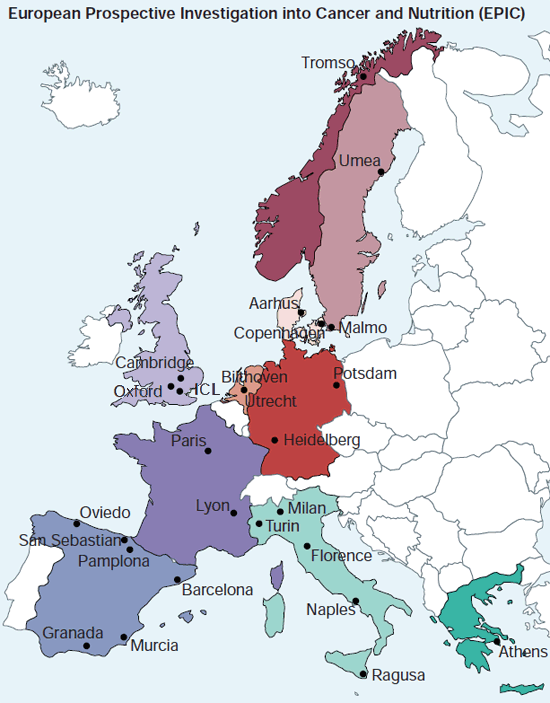Abstract
Circulating levels of insulin-like growth factor I (IGF-I) and its main binding protein, IGF binding protein 3 (IGFBP-3), have been associated with risk of several types of cancer. Heritable factors explain up to 60% of the variation in IGF-I and IGFBP-3 in studies of adult twins.
We systematically examined common genetic variation in 18 genes in the IGF signaling pathway for associations with circulating levels of IGF-I and IGFBP-3. A total of 302 single nucleotide polymorphisms (SNP) were genotyped in >5,500 Caucasian men and 5,500 Caucasian women from the Breast and Prostate Cancer Cohort Consortium.
After adjusting for multiple testing, SNPs in the IGF1 and SSTR5 genes were significantly associated with circulating IGF-I (P < 2.1 × 10(-4)); SNPs in the IGFBP3 and IGFALS genes were significantly associated with circulating IGFBP-3. Multi-SNP models explained R(2) = 0.62% of the variation in circulating IGF-I and 3.9% of the variation in circulating IGFBP-3. We saw no significant association between these multi-SNP predictors of circulating IGF-I or IGFBP-3 and risk of prostate or breast cancers.
Common genetic variation in the IGF1 and SSTR5 genes seems to influence circulating IGF-I levels, and variation in IGFBP3 and IGFALS seems to influence circulating IGFBP-3. However, these variants explain only a small percentage of the variation in circulating IGF-I and IGFBP-3 in Caucasian men and women.
Further studies are needed to explore contributions from other genetic factors such as rare variants in these genes and variation outside of these genes.
